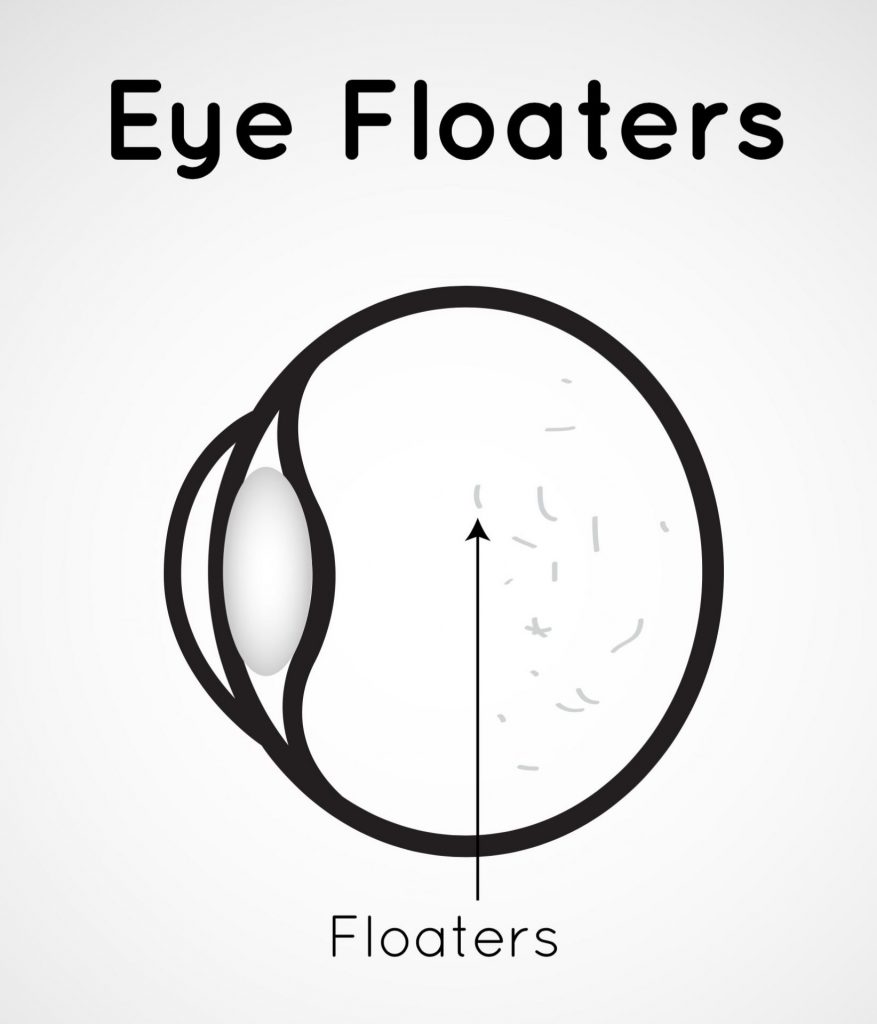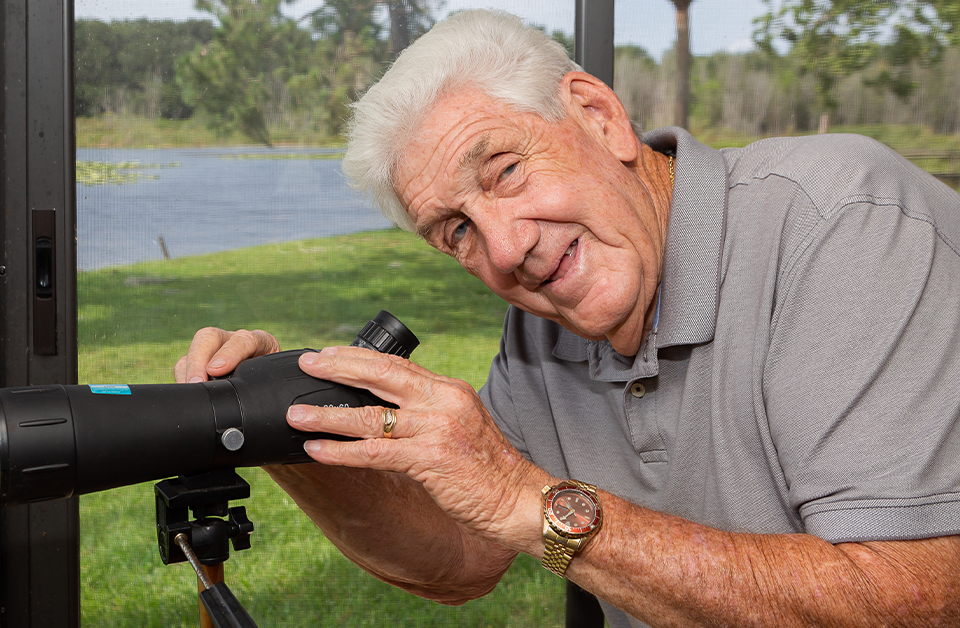While working his first job out of high school, an entry-level position with an electric company in his hometown of Milwaukee, Richard Cebrowski discovered he had a knack for numbers. He resolved to build his livelihood on that strength and enrolled in college to study accounting.
“It was a small private college in Milwaukee, which is now a part of Concordia University Wisconsin,” elaborates Richard, 83. “I became a certified public accountant and did that my entire career, about 50 years. Most of that time, I operated my own accounting firm.
“In addition to doing taxes, I performed audits, including internal audits for various companies. I looked for irregularities in their books and conformance to generally accepted accounting principles. I’ve been full-time retired since 1998.”
Once Richard took down his shingle for good, he relocated to Florida. He cites the warm weather as his primary motivation for the move.
“Milwaukee is right on Lake Michigan, so it gets lake-effect snow and a lot of subzero temperatures in the winter,” he describes. “To avoid that, we moved to Florida. We had a house built and have been living there since 1998.”
The subtropical climate allows Richard to pursue his favorite hobby, golfing, year-round. Recently, however, Richard has struggled on the links due to problems with his vision.
“Straight lines appeared crooked to me,” he reveals. “I couldn’t putt because I couldn’t see a straight line to the hole. And every now and then while driving the car, the white line in the middle of the road would suddenly have an anomaly. It wasn’t straight. 

“The vision in my right eye was a little blurry as well, and there were floaters in my vision that were pretty much constant. They didn’t get in the way while I was driving, but they were extremely annoying. They looked like flies floating past my eye.”
Richard took his complaints to his general ophthalmologist. The physician was concerned about the symptoms and referred him to Alexander C. Barnes, MD, a board-certified, fellowship-trained retina specialist at Florida Retina Institute.
“Mr. Cebrowski came to us with symptoms of blurred and distorted vision as well as floaters in his right eye,” Dr. Barnes recalls. “We determined that he suffered with wet macular degeneration and created a treatment plan to halt progression of the disease and prevent further vision loss.”
Disease Hallmarks
Macular degeneration is the most common cause of central vision loss in people older than 50, Dr. Barnes observes. Thus, it is also called age-related macular degeneration or AMD. It is a disease affecting the central part of the retina, called the macula.
“The macula is the part of the retina responsible for our central and fine vision,” Dr. Barnes educates. “It’s essential for performing tasks such as reading, driving, watching TV and recognizing faces, so it’s of great importance to maintaining quality of life.
“AMD affects people as they get older. That’s the age-related component. And as the name implies, there’s also a degenerative component, which means the condition progresses over time.”
AMD comes in two varieties: dry and wet.
“Most people with AMD — about 80 percent — have the dry form,” Dr. Barnes explains. “The hallmark of dry AMD is the presence of small, yellowish deposits called drusen, which retina specialists can identify when looking into the eyes. Over time, drusen can accumulate and lead to a gradual decrease in vision. This vision loss typically occurs over many years.
“A smaller percentage of patients with AMD develop the wet form, which can lead to a more rapid loss of central vision. With the wet form, an abnormal network of blood vessels grows and leaks fluid and blood into the retina and macula, causing a sudden loss of vision.”
In the early stages of AMD, there are often no symptoms, and people are generally unaware they have the condition. AMD is typically detected during a routine eye exam when people see their eye doctors for prescription updates or because they are experiencing symptoms of other conditions.
“As AMD progresses, people may experience difficulty doing tasks that require fine vision such as reading and watching TV,” Dr. Barnes describes. “They may notice visual distortions, such as straight lines appearing wavy. They may need brighter light when reading or doing close-up work, and the printed word may be increasingly blurry.”
Retina specialists can typically diagnose AMD through a dilated eye exam, which provides a clear look at the retina and macula through widened pupils. Hallmarks of AMD, such as drusen, are visible on the exam. Doctors also look for areas of bleeding common to wet AMD.
“We may scan the eyes using an imaging technique called optical coherence tomography, or OCT,” Dr. Barnes informs. “OCT shows us the layers of the retina, in which we can visualize certain patterns that are suggestive of wet AMD.
“Another imaging modality we sometimes use is fluorescein angiography, which is a dye test that allows us to examine blood flow in the back part of the eye. We can detect abnormal blood vessels that are usually present in wet AMD.”
Treatment Mainstays
The typical treatment for dry AMD is the specific formulation of vitamins called AREDS2, which refers to the Age-Related Eye Disease Study, of which there were two.
AREDS is a major clinical trial sponsored by the National Eye Institute. During the second study, the AREDS2 formulation — which contains vitamin C, vitamin E, zinc and lutein — was found to slow the progression of AMD. However, it is not a cure.
“It’s also important to monitor patients’ eyes for possible progression to wet AMD,” Dr. Barnes details. “We give patients a grid that resembles a piece of graph paper, called an Amsler grid (see graphic). We ask them to check the vision in each eye periodically. If they notice any new distortion in the lines on the grid, we tell them to see us right away so we can determine if the condition is progressing to wet AMD.


To use the Amsler grid, follow these steps once a day, every day:
1. Wearing any glasses you normally use to read, hold the grid 12 to 15 inches away from your face in good light.
2. Cover one eye.
3. Look directly at the center dot with your uncovered eye and keep your eye focused on it.
4. While looking directly at the center dot, notice in your side vision if all grid lines look straight or if any lines or areas look blurry, wavy, dark or blank.
5. Follow the same steps with the other eye.
If you notice any areas of the grid that appear darker, wavy, blank or blurry, contact your ophthalmologist right away.
Remember
“If we begin treatment during that transition period, we have a much better chance of preventing a pronounced loss of central vision from wet AMD.”
There is hope for patients who do develop full-blown wet AMD, however. Certain medications have been highly effective at limiting vision loss.
“The crux of treatment for wet AMD is the injection into the eyes of a class of drugs called anti-VEGF medications,” Dr. Barnes reveals. “These medications work against vascular endothelial growth factor (VEGF), proteins that promote blood vessel formation. Anti-VEGF acts against and stabilizes the abnormal network of blood vessels present in wet AMD.”
The anti-VEGF medications most commonly used by the retina specialists at Florida Retina Institute are bevacizumab (brand name AVASTIN®), ranibizumab (LUCENTIS®) and aflibercept (EYLEA®).
“There is a new medication being rolled out called faricimab. Its brand name is VABYSMO®,” Dr. Barnes reports. “The advantage of this medication is that it has a longer duration of effect, so patients could potentially require fewer injections.
“More new medications are being studied as are new methods of delivering the medication.”
Kind and Concerned
Richard is receiving regular anti-VEGF injections into his right eye at Florida Retina Institute.
“They numb my eye first, so the injections are not painful,” he assures. “Sometimes, a drop of blood falls on my lens and I think it’s a big floater, but it’s not. Then my eye tears, and I blot the tear with a tissue. That’s the end of the floater.”
The vision in Richard’s right eye has improved significantly since starting the injections.
“There was a big floater that I had for about three years, but after the first injection, it was gone,” Richard says. “Every once in a while, I see a tiny speck, but I really don’t have floaters anymore.
“Lines are straight now. When I look at my Amsler grid, they’re fine, and when I’m out on the golf course, I see well enough that I can putt and see where the ball goes.”
When Dr. Barnes first began treating Richard, he was administering the injections every four weeks. He recently extended the time between injections to six weeks because of the progress Richard has made.
“Dr. Barnes is great,” Richard raves. “He’s knowledgeable and discusses everything with me every step of the way. He tells me what he’s doing and what I can expect.
The whole organization is great. All the people are polite, and I get taken care of on time. If I have a 9 o’clock appointment, they take me at 9 o’clock.
“My vision is everything to me. I don’t worry about a lot of illnesses, accidents or anything like that, but I don’t want to be blind. Dr. Barnes is helping with that. I highly recommend him.”








